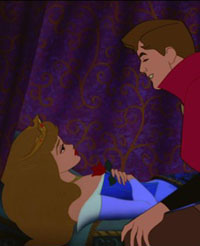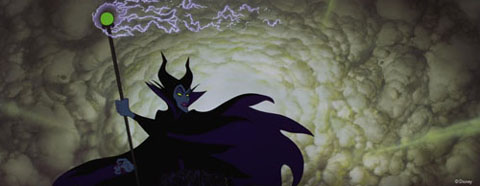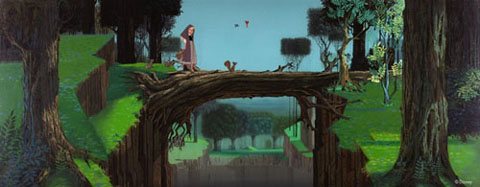 A Look at the Restoration of “Sleeping Beauty”
A Look at the Restoration of “Sleeping Beauty”
BY KEVIN CARR
Sara Duran-Singer is the Senior VP of Post Production at Walt Disney Studios and the Executive Sponsor In-Charge of restoration and preservation. She oversaw how Walt Disney’s “Sleeping Beauty” was restored for the Platinum-Edition DVD and BluRay release.
Ever since DVDs became the home video standard, the Walt Disney Company has provided fans with incredible releases in the form of Platinum Editions. The platinum treatment is reserved for only the classic in the Disney library, and with each release, technology has allowed them to restore the film even more.
The latest Platinum Edition to come out is the 50th Anniversary release of “Sleeping Beauty,” which is also the first time a Platinum Edition has been released on BluRay.
Sara Duran-Singer, the Senior VP of Post Production at Walt Disney Studios and the Executive Sponsor In-Charge of restoration and preservation, took some time to explain to 7M Pictures how they brought new life to “Sleeping Beauty.”
 Duran-Singer, who has worked on all the platinum titles since “Bambi” in 2004, pointed out that with previous releases, they were limited to using interpositive and internegatives that were sometimes two to four generations from the original camera negative.
Duran-Singer, who has worked on all the platinum titles since “Bambi” in 2004, pointed out that with previous releases, they were limited to using interpositive and internegatives that were sometimes two to four generations from the original camera negative.
“There’s a lot of grain, a lot of dirt, the image is softer, the colors are not quite as active,” she explained. This worked okay for VHS, but for DVD – and especially for BluRay – they had to step up the process.
They went back to the original camera negative from the 50s, which was shot on explosive nitrate. From this, they were able to pull color separations on black-and-white film to retain all the sharp images and true colors from the original production. This was cleaned, scanned at 4K resolution and stored as a digital file to preserve it forever.
 Because the file is now digital, the studio could clean up mistakes in the original art, such as if paint had popped off the original cell. In order to keep the integrity of the film, the restoration team only made these fixes if they determined the original animators would have fixed it. “It’s not our goal to change the images; it’s basically to restore the level that the original filmmakers would have if they had the ability,” Duran-Singer explained.
Because the file is now digital, the studio could clean up mistakes in the original art, such as if paint had popped off the original cell. In order to keep the integrity of the film, the restoration team only made these fixes if they determined the original animators would have fixed it. “It’s not our goal to change the images; it’s basically to restore the level that the original filmmakers would have if they had the ability,” Duran-Singer explained.
One of the special features of the new release of “Sleeping Beauty” is that this version maintains the original CinemaScope widescreen, which projected the film with a 2.55:1 aspect ratio. The entire scope of the film is returned, offering more image information on the edges of the screen. In short, there are parts of the film in this release that haven’t been publicly seen since it was first presented in theaters in 1959.
 In particular, Duran-Singer pointed out key scenes that are enhanced with the original 2.55:1 aspect ratio. “When they have the welcoming party for Princess Aurora to introduce her to the entire kingdom and then that huge parade of horses and soldiers and peasants,” she said. “The characters move in and across, but you still lost their entrance.” Now, viewers can see the entire sequence fully across the screen.
In particular, Duran-Singer pointed out key scenes that are enhanced with the original 2.55:1 aspect ratio. “When they have the welcoming party for Princess Aurora to introduce her to the entire kingdom and then that huge parade of horses and soldiers and peasants,” she said. “The characters move in and across, but you still lost their entrance.” Now, viewers can see the entire sequence fully across the screen.
In addition to the visual restoration, the original 3-track score recordings were discovered in Berlin, and those have been incorporated into the new 5.1 and 7.1 Enhanced Home Theatre Mix.
“Sleeping Beauty” is available on both standard DVD and BluRay. Upcoming restored titles of Disney classics include “Pinocchio” in 2009 and “Fantasia,” which is undergoing the restoration process right now.
